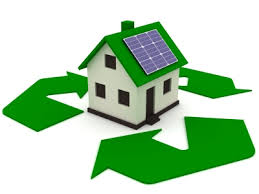
Renewable Heat Incentive (RHI) rebates
Renewable, low-carbon technologies have a crucial role in providing energy in the future, for homes and businesses in the UK. The Government has committed to the EU’s 2020 policy on renewable energy, but what does that mean? In short, legislation has been created to ensure that the UK will get 15% of its energy from renewable sources by the year 2020. Part of this will come from large-scale operations such as wind farms. Some will come from homes and businesses that generate their own heat.
Renewable Heating Incentive (RHI)
This means that energy users can invest in their own renewable generation systems and sell unused energy back to suppliers. So, you can also play a role in contributing to a low carbon future, whilst reducing your energy bills and generating an income. This comes under the heading of the Renewable heating Incentive (RHI) rebate scheme. However, you will need to meet certain criteria for eligibility.
Feed in tariffs
You may have heard of feed in tariffs already. The Government launched the Renewable Heat Incentive (RHI) phase 1, in 2011. This was an incentive to make investing in renewable heating more attractive to consumers. Domestic and commercial energy users can now earn a fixed income for each kilowatt per hour worth of heat that they produce, over a period of 20 years.
Renewable Heating Incentive (RHI) rebate
Rebates for installing renewables are also available. For example, domestic customers may be able to get a rebate of £300 from the Energy Saving Trust, upon completing the installation of a solar thermal system. These rebates are also available for other technologies such as biomass boilers, with the Energy Saving Trust offering rebates of £950 for some of these.
Phase 2 of the RHI will come into force in 2013, with further changes to tariffs in 2014. So, what does this forthcoming RHI rebate scheme mean? An amendment to the legislation for householders means that consumers who currently using fossil fuel heating systems may be able to receive a subsidy to help them meet the cost of installing renewable heating technologies. These technologies include certain air source heat pumps (ASHP), ground source heat pumps (GSHP), solar PV, solar thermal systems and biomass boilers.
Renewable heat technologies at a glance
Air source heat pumps (ASHP): These pieces of kit can absorb heat from the air outside, but is the UK warm enough? Well, this isn’t an issue, as they still work when the temperature outdoors is as low as -15 ° C. It is a similar principle to that of a refrigerator, only in reverse. After extracting heat from the air, it is compressed and the resulting heat can then be used in place of conventional heating.
Ground source heat pumps (GSHP): As the name suggests, this technology extracts heat from the ground. Using fluid filled pipes buried in your garden, the heat from the ground is absorbed and compressed. This fluid can then be used for heating and hot water. The cooled fluid is circulated back into the ground, to ensure continuous heat when you need it.
Solar PV: Solar photovoltaics (PV) capture energy from the sun, using photovoltaic cells, often fitted to the roof of the building. They still work on cloudy days and during the winter, so they are well-suited to our climate in the UK! They are ideal for creating electricity for lighting and certain household appliances.
Solar Thermal: These systems use energy from the sun to heat up water. As with solar panels, they are usually placed on your roof and they still work on cloudy days and during the winter. You can still use a boiler or immersion heater for backup, which is useful for large families!
Biomass boilers: Biomass basically refers to biological material. In the case of biomass burners, this can be logs, wood pellets or wood chips. Many people have log burners, but biomass boilers are available that can heat an entire building. They can replace conventional boilers in central heating systems.
Creating your own energy from renewable sources is highly attractive for a number of reasons. Many people want to live a more sustainable lifestyle, protect themselves against future spikes in fossil fuel prices, save money on bills and generate an extra income. You can find out if you meet the criteria for eligibility by contacting Ofgem .










